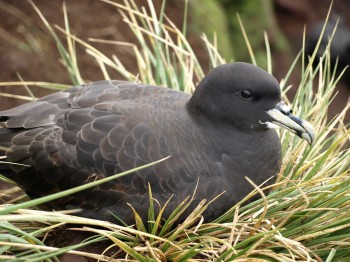Mareile Techow (Percy FitzPatrick Institute of African Ornithology, University of Cape Town, Rondebosch, South Africa) and colleagues have published in the open-access journal Polar Research on the origins of White-chinned Petrels Procellaria aequinoctialis caught on longlines in New Zealand and South African waters.
The research note’s abstract follows:
“The white-chinned petrel (Procellaria aequinoctialis) is the seabird species most frequently killed by fisheries in the Southern Ocean and is listed by the International Union for the Conservation of Nature and Natural Resources as globally vulnerable. It breeds around the sub-Antarctic, but genetic data identified two subspecies: P. a. aequinoctialis from islands in the Atlantic and Indian Oceans and P. a. steadi from the New Zealand sub-Antarctic islands. We identify the region of origin of birds killed by two long-line fisheries based on differences in the mitochondrial gene cytochrome b. All 113 birds killed off South Africa had the haplotype of P. a. aequinoctialis, whereas all the 60 birds from New Zealand had P. a. steadi haplotypes. The two subspecies of white-chinned petrels thus appear to disperse to different regions irrespective of their age, which accords with the tracking data of adult birds. Our finding has significant implications for managing the bycatch of this species by regional fisheries.”
With thanks to Mark Tasker.

White-chinned Petrel, photograph by Andy Wood
Reference:
Techow, N.M.S.M., O’Ryan, C., Robertson, C.J.R. & Ryan, P.G. 2016. The origins of white-chinned petrels killed by long-line fisheries off South Africa and New Zealand. Polar Research 35, 21150 http://dx.doi.org/10.3402/polar.v35.21150.
John Cooper, ACAP Information Officer, 22 June 2016

 English
English  Français
Français  Español
Español